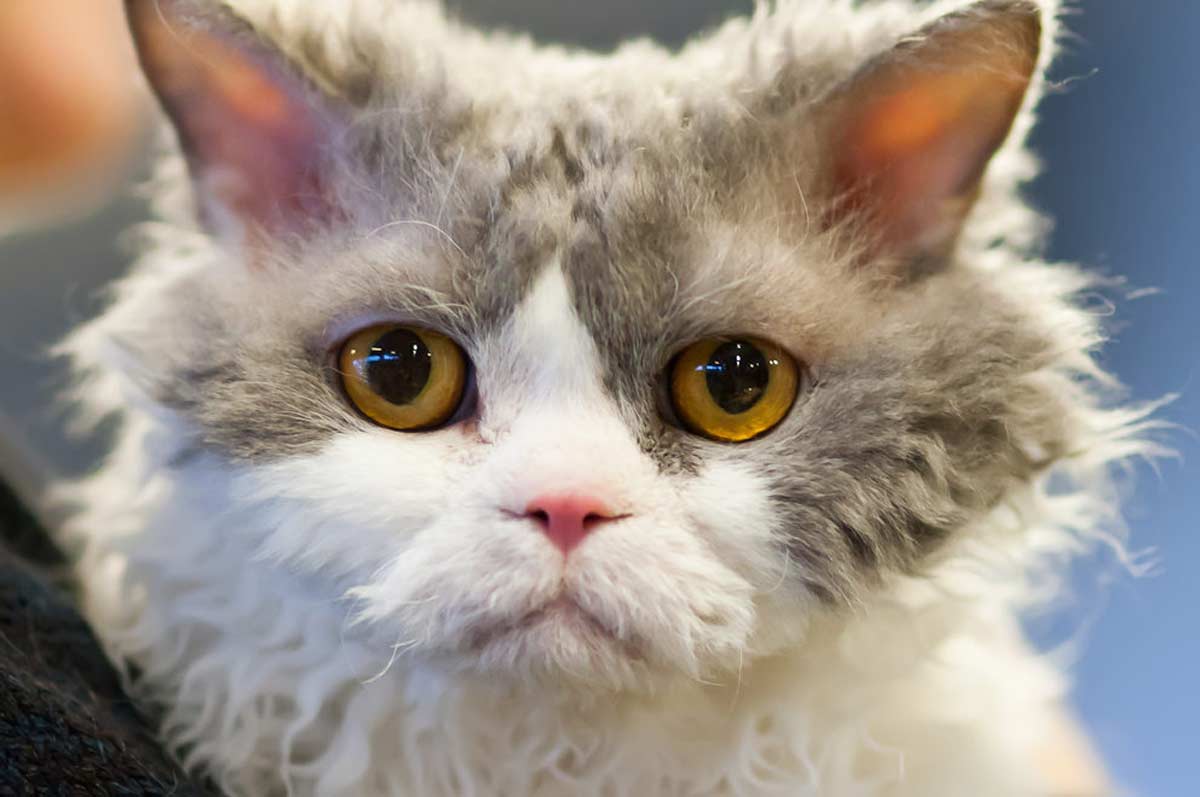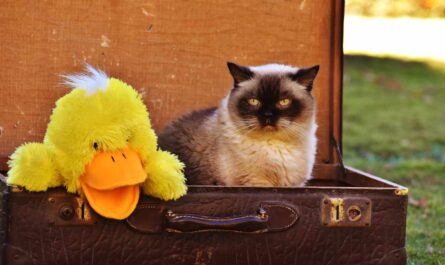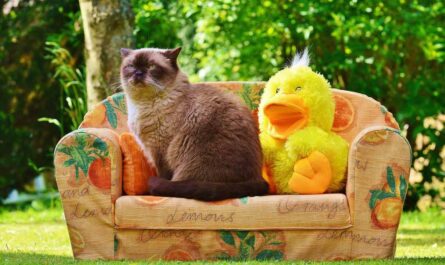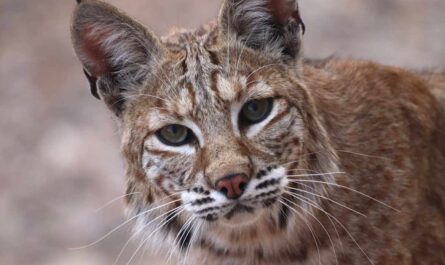How to tell if your cat has a double coat? Ah, the mesmerizing feeling of running your fingers through your cat’s fur. Soft, luxurious strands cascade down your touch, a testament to their meticulously groomed coat. But have you ever wondered what lies beneath that surface? Does your feline friend possess a single layer of sleek fur, or perhaps a more complex double coat designed for ultimate comfort and protection? This comprehensive guide delves into the fascinating world of cat fur types, with a particular focus on the unique characteristics of a double coat.
Unveiling the Mystery
This article is your one-stop shop for understanding your cat’s fur. We’ll explore the key differences between single and double coats, delve into the benefits a double coat offers your feline companion, and discuss some popular breeds known for this special type of fur. But fear not, even if your cat isn’t a pedigreed breed, we’ll equip you with several methods to identify a double coat. To top it all off, we’ll provide valuable tips on keeping your double-coated cat’s fur healthy and luxurious.
A Tale of Two Coats: Single vs. Double Coats in Cats
Our feline companions come in a dazzling array of fur lengths, colors, and patterns. But beneath all that fluff (or lack thereof) lies a fascinating secret: the coat type. Cats, those furry enigmas, can be broadly categorized into two coat types – single and double. Understanding the difference between these two can not only help you appreciate your cat’s unique fur, but also inform proper grooming and care practices.
The Single Layer: Streamlined and Sleek
Imagine a sleek, single layer of fur blanketing your cat’s body. This is the essence of a single coat. It typically consists of two main components:
- Guard hairs: These are the longer, coarser hairs that form the outer layer of the fur. They act as a protective barrier, shielding your kitty from dirt, debris, and minor scratches.
- Undercoat: Beneath the guard hairs lies a softer, shorter layer of fur called the undercoat. In single-coated cats, the undercoat is often minimal, providing minimal insulation but contributing to the overall softness of the fur.
Single coats are often associated with short-haired breeds like the Siamese, Abyssinian, and Oriental Shorthair. These breeds tend to shed moderately throughout the year, with a more noticeable increase during seasonal transitions.
The Double Threat (of Warmth): A Coat Built for Comfort
Double coats, on the other hand, are a two-part system designed for ultimate comfort and adaptability. Here’s what makes them stand out:
- Dense Undercoat: Imagine a layer of luxurious, fluffy fur acting as built-in insulation. This is the undercoat of a double coat, and it plays a crucial role in regulating your cat’s body temperature. During colder months, the dense undercoat traps warm air close to the skin, keeping your feline friend cozy.
- Guard Hairs: Just like in single coats, double coats have a layer of longer guard hairs on top. These guard hairs provide essential protection from the elements, such as rain, snow, and harsh sunlight.
The combination of a dense undercoat and protective guard hairs makes double coats ideal for cats who live in climates with significant temperature variations. Breeds like Maine Coons, Siberian Forest cats, and Norwegian Forest cats are all renowned for their magnificent double coats, which allow them to thrive in cold weather.
Beyond Just Fur: It’s important to remember that a healthy coat goes beyond just fur. A cat’s skin plays a vital role, acting as a barrier against allergens and infections. Natural oils secreted by the skin also contribute to coat health, keeping it shiny and supple. Regular grooming helps distribute these oils and maintain overall coat health, regardless of whether your cat has a single or double coat.
The Power of Two: Benefits of a Double Coat for Cats
Have you ever marveled at the luxuriously thick fur of a Maine Coon or the delightfully plush coat of a Persian? These cats, along with many other breeds, boast a remarkable double coat, a marvel of feline adaptation that offers a multitude of benefits. Let’s delve into the fascinating world of double coats and discover the superpowers they bestow upon our feline companions.
Keeping Cool, Keeping Warm: Temperature Regulation Throughout the Seasons
Imagine your cat as a tiny explorer, venturing out into the world regardless of the weather. A double coat serves as their personal climate control system, ensuring they stay comfortable and cozy in both hot and cold temperatures. Here’s how:
- The Undercoat: A Built-in Thermal Barrier: The undercoat, a dense layer of soft, short fur close to the skin, acts like a fluffy thermal layer. It traps warm air during chilly weather, effectively insulating your cat and preventing them from losing precious body heat.
- Guard Hairs: Guardians Against the Elements: The top layer of the double coat consists of longer, coarser guard hairs. These hairs are water-resistant and act as a shield, repelling rain, snow, and even wind. During warmer months, the guard hairs help prevent overheating by allowing air to circulate through the fur and creating a cooling effect.
With this dynamic duo working together, your double-coated cat can comfortably explore the world, be it a brisk winter morning or a sunny afternoon basking in the sun.
Nature’s Armor: Protection From the Elements
The double coat isn’t just about temperature regulation; it also serves as a protective barrier from the elements. Here’s how it safeguards your feline friend:
- Defense Against the Wet Stuff: The water-resistant guard hairs act like a miniature raincoat, repelling rain and snow. This allows your cat to stay relatively dry during their outdoor escapades, keeping them comfortable and minimizing the risk of getting chilled.
- Shielding From Debris: The dense undercoat and guard hairs act as a physical barrier, protecting your cat from thorns, twigs, and other environmental debris they might encounter while exploring the great outdoors. This reduces the risk of scratches and minor injuries, keeping your adventurous feline safe.
With this natural armor in place, your double-coated cat can confidently navigate their environment, venturing through brush, exploring under bushes, and investigating all the exciting nooks and crannies their world has to offer.
Shedding: A Double-Edged Sword (But Not Really)
It’s a common misconception that double-coated cats shed more than their single-coated counterparts. While they do experience seasonal shedding, where they lose their undercoat to make way for a new one better suited to the changing weather, the overall amount of shedding might not be significantly higher. Here’s why:
- Seasonal Shedding: Double-coated cats typically shed twice a year, once in the spring to prepare for warmer weather and again in the fall to grow a thicker winter undercoat. This shedding can be more noticeable, with fur clumps appearing around the house.
- Individual Differences: Just like humans have varying hair types, the amount of shedding can also vary among double-coated cats. Breed, overall health, and even diet can play a role. Regular brushing helps manage loose fur, regardless of coat type.
So, while double-coated cats do shed seasonally, it’s not necessarily a losing proposition (pun intended!). A good brushing routine and a loving vacuum cleaner can easily handle the extra fur tumbleweeds that might appear during shedding season.
Breeds that Double Down: Common Cats with Double Coats
The feline world boasts an incredible variety of coat types, from the sleek and shorthaired to the luxuriously longhaired. But beneath all that fur, some cats harbor a secret weapon for braving the elements: a double coat. This remarkable adaptation provides superior insulation and weatherproofing, keeping your feline friend comfortable year-round. Let’s delve into some popular breeds renowned for their double coats, turning your cat into a veritable champion of fluff.
Majestic Maine Coons: Kings and Queens of the Double Coat
The Maine Coon, a gentle giant with a captivating gaze, is a true royalty when it comes to double coats. Imagine a coat fit for a king (or queen!), boasting long, luxurious guard hairs that cascade down their body like a shimmering waterfall. But beneath this glamorous exterior lies a dense undercoat, a hidden layer of soft, insulating fur. This undercoat acts like a built-in thermal layer, keeping your Maine Coon cozy and protected from the harshest winters.
A Tale of Two Textures: When petting a Maine Coon, you’ll experience the delightful contrast between the smooth, glossy guard hairs and the plush undercoat. It’s like running your fingers through a field of silken wheat followed by a dip into a cloud – a truly unforgettable textural sensation! This double coat also serves a practical purpose. The longer guard hairs help shed water and debris, keeping the undercoat clean and dry. So, even after an adventurous romp through the wet grass, your Maine Coon’s undercoat remains snug and comfortable.
The Siberian Husky (of the Feline World): The Siberian Forest Cat
Hailing from the frigid forests of Siberia, the Siberian Forest Cat boasts a double coat that would make even a husky proud. Imagine a coat specifically designed to withstand harsh winters, with a thick, dense undercoat that traps warmth close to the body. This undercoat acts like a built-in thermal layer, ensuring your Siberian Forest Cat stays comfortable even in the most bone-chilling temperatures.
Built for the Elements: The outer layer of the Siberian Forest Cat’s double coat is no slouch either. It features long, water-resistant guard hairs that repel moisture and snow, keeping the undercoat dry and functional. This weatherproofing ability allows Siberian Forest Cats to thrive in environments where lesser felines might struggle. So, if you live in a region with harsh winters, a Siberian Forest Cat might be the purrfectly adapted companion for you!
Norwegian Forest Cats: Built for Winter Wonders
Another champion of the double coat is the Norwegian Forest Cat. These magnificent felines, bred to withstand the snowy landscapes of Norway, possess a double coat that’s both beautiful and functional. Imagine a coat featuring a water-resistant outer layer that shields your feline friend from the elements, while the dense undercoat provides exceptional warmth.
A Coat Fit for a Viking: The long guard hairs of the Norwegian Forest Cat’s double coat resemble the flowing mane of a Viking warrior, adding to their majestic appearance. This outer layer not only repels water but also helps to shed snow, keeping the undercoat clean and dry. The undercoat itself is a marvel of nature, a dense layer of plush fur that traps warmth close to the body, ensuring your Norwegian Forest Cat stays comfortable even during the coldest Scandinavian winters.
Beyond the Usual Suspects: It’s important to remember that not all longhaired cats possess double coats. For instance, the Persian, while renowned for its luxurious fur, typically has a single coat. So, while coat length can be a good initial indicator, a closer inspection or consulting your cat’s breed information is the best way to determine if they have a double coat.

Unveiling the Undercoat: Methods to Identify a Double Coat
Ever stroked your feline friend and wondered, “Does my cat have a double coat?” The answer to this whisker-twitching question can impact your grooming routine and understanding of your cat’s shedding habits. Fear not, curious cat companions! This section will equip you with several methods to determine if your furry roommate boasts a luxurious double coat.
The Visual Inspection: Unveiling the Hidden Layer
The first step in our double-coat detective work is a visual inspection. Take a moment to admire your cat’s magnificent fur from head to tail. Does it appear to have two distinct lengths? Often, cats with double coats will have a longer, coarser outer layer of fur (the guard hairs) that provides protection and helps repel water. Beneath this topcoat might lie a hidden treasure – a layer of shorter, denser fur known as the undercoat. This undercoat acts like a built-in insulator, keeping your kitty warm in chilly weather.
Look for Clues: While a full visual inspection can be helpful, some cats are particularly skilled at keeping their undercoat hidden. If your feline friend has long fur, it can be challenging to see the undercoat at first glance. However, there are still some visual clues to look out for. Does your cat’s fur appear particularly thick or fluffy in certain areas? This might be a hint of a hidden undercoat peeking through.
The Parting Trick: A Simple but Effective Technique
Here’s a simple yet effective technique to confirm your suspicions: the parting trick! Gently brush your cat’s fur against the grain (meaning in the opposite direction of how it naturally grows) on their back, near the shoulder blades. This will create a parting in the fur, revealing the layer beneath. If your cat has a double coat, you should be able to see a shorter, denser layer of fur (the undercoat) peeking through beneath the longer guard hairs.
Be Gentle and Respectful: Remember, even the most patient kitty might not appreciate excessive brushing against the grain. Perform this gentle inspection with care and respect your cat’s boundaries if they seem uncomfortable.
The Feel Test: Texture Tells the Tale
Sometimes, seeing isn’t believing. That’s where the feel test comes in! Gently stroke your cat’s fur, paying close attention to the texture. A double coat will typically have a softer, denser undercoat compared to the coarser guard hairs on top. Imagine petting a soft, fluffy cloud – that’s the feeling you might get when encountering the undercoat.
Building Trust is Key: If your cat isn’t a fan of being touched, don’t force it! Building trust and creating a positive association with petting is essential. Offer treats or praise during gentle petting sessions, gradually working your way towards feeling their fur for texture.
Seasonal Shifts: A Sign of a Double Coat in Action
Double-coated cats have a secret weapon for adapting to seasonal changes – their fur! As the weather gets colder, their undercoat thickens to provide extra warmth. Conversely, when summer arrives, they shed their dense undercoat to stay cool. This seasonal shedding is a telltale sign of a double coat. If you notice your cat shedding noticeably during spring and fall, it might be their undercoat making way for a new season.
By combining these methods – visual inspection, the parting trick, the feel test, and keeping an eye on seasonal shedding patterns – you can become a double coat detective extraordinaire! Understanding your cat’s coat type can help you tailor their grooming routine and appreciate their unique fur adaptations.
Double the Care: Maintaining a Healthy Double Coat
Does your feline friend boast a luxurious coat that seems to go on forever? If so, they might be sporting a magnificent double coat! This special coat type offers impressive insulation, keeping your kitty warm in winter and cool in summer. But with great fur comes great responsibility – double-coated cats require a bit more TLC in the grooming department. This section will equip you with the knowledge and tools to keep your double-coated cat’s coat healthy, shiny, and free of tangles.
Brushing is Key: A Weekly Detangling Ritual
The cornerstone of caring for a double coat lies in regular brushing. Aim for at least one thorough brushing session per week, and even more frequently during peak shedding seasons (typically spring and fall). Brushing helps remove loose fur before it has a chance to shed all over your furniture (and let’s be honest, your clothes!). It also prevents matting, which can be uncomfortable for your cat and requires professional attention to remove.
Here’s a quick brushing routine for your double-coated companion:
- Gather your supplies: A slicker brush and a metal comb are a great starting point. The slicker brush will help remove loose fur from the undercoat, while the metal comb detangles any knots or mats that might have formed.
- Start gentle: Begin by gently brushing your cat in the direction of fur growth, starting from the head and working your way down the body. Pay particular attention to areas prone to matting, such as the belly, behind the ears, and around the legs.
- Be patient and reward good behavior: Brushing can be a stimulating experience for your cat. If they seem wiggly or hesitant, take breaks and offer praise or treats throughout the session.
Brushing Tip: Regularly removing loose fur not only helps manage shedding but also helps distribute your cat’s natural oils, keeping their coat healthy and shiny.
Seasonal Shedding Strategies: Embracing the Fuzz
Shedding is a natural process for all cats, but double-coated breeds tend to shed more heavily during seasonal transitions. Don’t despair! Here are a few tips to help you manage the extra fur during these times:
- Increase Brushing Frequency: Bump up your brushing routine to two or even three times a week during shedding seasons. This will help remove loose fur before it ends up on your clothes, furniture, and inevitably, your favorite black outfit.
- De-Shedding Tools to the Rescue: Consider using a de-shedding tool, specifically designed to remove loose undercoat fur. These tools come in various forms, from brushes to rakes, so find one that works best for your cat’s coat type and comfort level. Business – Money Making – Marketing – E-commerce
- Embrace the Vacuum: Investing in a good quality vacuum cleaner becomes especially important with a double-coated cat. Regular vacuuming will help keep your home fur-free and minimize the tumbleweeds of fur drifting across the floor.
Shedding Humor: While shedding can feel overwhelming at times, remember, it’s a sign of a healthy coat! Embrace the extra fur with a sense of humor, and think of it as a furry contribution to keeping your home cozy.
Diet Matters: Nourishing the Coat from Within
A healthy diet plays a crucial role in maintaining a healthy double coat. Look for cat food formulated for longhaired or double-coated breeds. These formulas are often rich in omega-3 and omega-6 fatty acids, which nourish the skin and promote a shiny, healthy coat.
Consulting Your Veterinarian: If you’re unsure about the best diet for your double-coated cat, consult your veterinarian. They can help you choose a food that meets your cat’s specific nutritional needs and contributes to a luxurious coat.
Hydration Matters: Don’t Forget the H2O!
While not directly related to coat health, proper hydration is essential for your cat’s overall well-being. Ensure your feline friend has access to fresh, clean water at all times. Consider using a water fountain, as some cats are more inclined to drink from moving water. Adequate hydration contributes to overall health, which can indirectly reflect in a healthy, vibrant coat. Cat accessories on Amazon
Consult Your Veterinarian: Your Cat’s Trusted Advisor
If you have any lingering questions or concerns about your cat’s coat health or excessive shedding, consulting your veterinarian is always the wisest course of action. Veterinarians are highly trained professionals who can provide personalized advice based on your cat’s individual needs.
They can perform a thorough examination to assess your cat’s coat condition and rule out any underlying medical issues that might be contributing to excessive shedding. Additionally, your veterinarian can offer guidance on proper grooming techniques and recommend products specifically formulated for your cat’s unique fur type.
Remember, your veterinarian is your trusted partner in keeping your feline friend happy and healthy. Don’t hesitate to reach out to them for any questions or concerns you may have about your cat’s magnificent coat.
Other Interesting Articles
- How to Help Your Cat Overcome Fears in 13 Strategic Steps
- 13 Easy Tricks To Teach Your Cat: Basic Feline Training Guide
- How To Train Your Cat: 15 Easy Steps To Teach New Things
- Why Do Cats Have Tails? 4 Fun Facts You Didn’t Know
- 16 Simple Ways To Establish A Stronger Bond With Your Cat
- How To Train Your Cat/Kitten To Sit: Steps, Command, Guide
- Cat Giving Birth: From Your Feline Pregnancy to Kitten Care
- Fading Kitten Syndrome: Age, Causes, Symptoms, Treatment
- Kitten Bottle Feeding: Chart, Tips, Recipe, Challenges, Guide
- Cat Pregnancy: Timeline, Signs, Labor, Behavior, Stages
- 16 Silent Killers of Cats Every Pet Owner Must Be Aware Of
- Do Mother Cats Discipline Their Kittens? A Guide To Owners
- How To Take Care of A Kitten 6 Weeks Old: A 7-Step Guide
- How To Tell If Your Cat is Trying to Hurt You: A To-Do Guide
- How To Tell If Your Cat Has Tapeworms: What You Can Do
- How To Tell If My Cat is in Pain After Neutering: What To Do
- How To Get A Cat To Trust You Fast: Signs, Tips, Techniques
- 12 Signs Your Cat is a Boy: Tips To Distinguish A Male Cat
- Single Kitten Syndrome: Age, Signs, Symptoms, Treatments
- How To Tell If Your Cat Can’t See Well: What You Can Do



